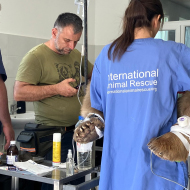"Now that we have a baseline against which to monitor the effects of future interventions, there will be opportunities to further improve horse welfare and racing safety."
Soft tissue injuries are one of the most common issues
The majority of injuries recorded for thoroughbred flat racing horses on race-day are minor and not career-ending, according to a new study which looked at 14 years of data.
Researchers from the RVC and British Horseracing Authority (BHA) have completed the first large scale study of race-day veterinary reports relating to thoroughbred horses raced on the flat.
Soft tissue injuries, respiratory conditions and gait abnormalities were the most commonly reported issues. Such issues included wounds, lacerations, epistaxis (or blood at the nostrils) and lameness, poor movement or stiffness without a specific cause being identified.
All in all, 70 per cent of recorded injuries between January 2000 and December 2013 were minor and not sufficient to end the horse's career.
Study author Sarah Rosanowski from the RVC said this was "not surprising" and is "of course a good thing". However, fatality rates in British flat racing have remained relatively stable, rather than declining, in the past 10 years.
The findings, published in the Equine Veterinary Journal, will prioritise research and help to identify risk factors associated with the most common and/or severe conditions, with the aim of reducing their occurrence. Researchers can now begin to determine what strategies could be used to improve equine welfare and reduce injury and fatalities in flat racing.
“The ongoing surveillance by the British Horseracing Authority is important as it provides a way to track the occurrence of veterinary events over time. Now that we have a baseline against which to monitor the effects of future interventions, there will be opportunities to further improve horse welfare and racing safety,” Rosanowski added.
Image courtesy of the RVC







 The veterinary mental health charity Vetlife is inviting the veterinary community to join it for a sponsored cold-water dip.
The veterinary mental health charity Vetlife is inviting the veterinary community to join it for a sponsored cold-water dip.
